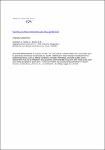Staphylococcus aureus toxins – Their functions and genetics
Grumann, Dorothee
Nübel, Ulrich
Bröker, Barbara M.
The outcome of encounters between Staphylococcus (S.) aureus and its human host ranges from life-threatening infection through allergic reactions to symptom-free colonization. The pan-genome of this bacterial species encodes numerous toxins, known or strongly suspected to cause specific diseases or symptoms. Three toxin families are in the focus of this review, namely (i) pore-forming toxins, (ii) exfoliative toxins and (iii) superantigens. The majority of toxin-encoding genes are located on mobile genetic elements (MGEs), resulting in a pronounced heterogeneity in the endowment with toxin genes of individual S. aureus strains. Recent population genomic analysis have provided a framework for an improved understanding of the temporal and spatial scales of the motility of MGEs and their associated toxin genes. The distribution of toxin genes among clonal lineages within the species S. aureus is not random, and phylogenetic (sub-)lineages within clonal complexes feature characteristic toxin signatures. When studying pathogenesis, this lineage association, which is caused by the clonal nature of S. aureus makes it difficult to discriminate effects of specific toxins from contributions of the genetic background and/or other associated genetic factors.
Dateien zu dieser Publikation
Keine Lizenzangabe

